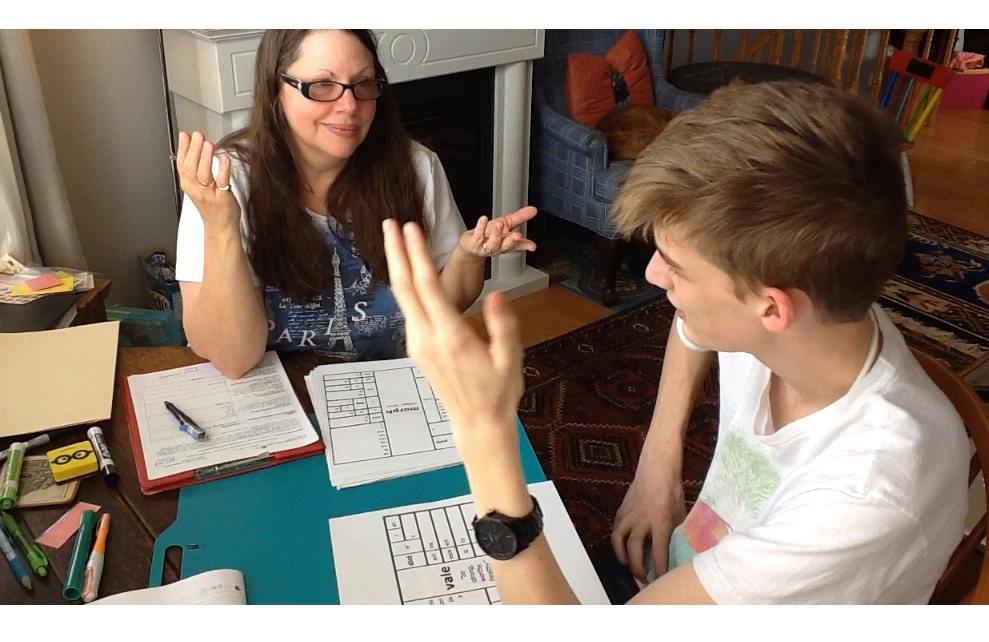During a session, I typically work with the reading of texts, along with Structured Word Inquiry (en.wikipedia.org/wiki/Structured_Word_Inquiry?fbclid=IwAR0F6rODsyVGMV7Ttd3cXZJZVWqx_QULQdAwCeAHYE9v5qgrbNucLSci3OA ), integrated with the teaching of grammar, which has a direct and positive impact on reading fluency, and, writing.
Structured Word Inquiry uses scientific method to explore the English writing system, and reveal its underlying logic. Learning how our writing system works and that there are no 'exceptions' and 'sight words' but instead reasons for spellings that make sense is useful for everyone, but to a dyslexic learner it is a game-changer.
Students learning through a phonics-based approach often hit a wall after what those approaches call “closed and “magic/silent e” syllables” (cat, and cape, for example). Once students encounter vowel teams, they might be able to read them in isolation (peal, feat, steam etc), but are often confused when it comes to reading them in context, and or spelling them. In both reading and spelling, English can seem random if we try to “sound out” words. That is because, although most of us have long been taught that spelling represents sound, this is not the case. The job of spelling (English orthography) is actually to represent meaning, and to help us see the connections between words that belong in the same word family (For example, these words share the base element <heal> e.g. heal, health, unhealthily).
Because reading and writing are interrelated, creating an understanding of words and their structure, improves both skills simultaneously. Poly-syllabic words, which struggling readers often stumble over, can be read more easily if the reader learns to recognise the meaningful chunks (e.g. unhelpfully --> un + help + ful + ly). Common pedagogical approaches to “syllable division” often obscure word meaning: e.g. breaking the word action into ac/tion may enable you to pronounce it, but what does <ac> mean??? Breaking the same word into its true component parts (called morphemes) illuminates meaning.
For example, action --> act (to act is to do something) + ion (a suffix that commonly forms nouns).
This approach improves reading comprehension and builds vocabulary, while supporting spelling.
Structured Word Inquiry uses scientific method to explore the English writing system, and reveal its underlying logic. Learning how our writing system works and that there are no 'exceptions' and 'sight words' but instead reasons for spellings that make sense is useful for everyone, but to a dyslexic learner it is a game-changer.
Students learning through a phonics-based approach often hit a wall after what those approaches call “closed and “magic/silent e” syllables” (cat, and cape, for example). Once students encounter vowel teams, they might be able to read them in isolation (peal, feat, steam etc), but are often confused when it comes to reading them in context, and or spelling them. In both reading and spelling, English can seem random if we try to “sound out” words. That is because, although most of us have long been taught that spelling represents sound, this is not the case. The job of spelling (English orthography) is actually to represent meaning, and to help us see the connections between words that belong in the same word family (For example, these words share the base element <heal> e.g. heal, health, unhealthily).
Because reading and writing are interrelated, creating an understanding of words and their structure, improves both skills simultaneously. Poly-syllabic words, which struggling readers often stumble over, can be read more easily if the reader learns to recognise the meaningful chunks (e.g. unhelpfully --> un + help + ful + ly). Common pedagogical approaches to “syllable division” often obscure word meaning: e.g. breaking the word action into ac/tion may enable you to pronounce it, but what does <ac> mean??? Breaking the same word into its true component parts (called morphemes) illuminates meaning.
For example, action --> act (to act is to do something) + ion (a suffix that commonly forms nouns).
This approach improves reading comprehension and builds vocabulary, while supporting spelling.


